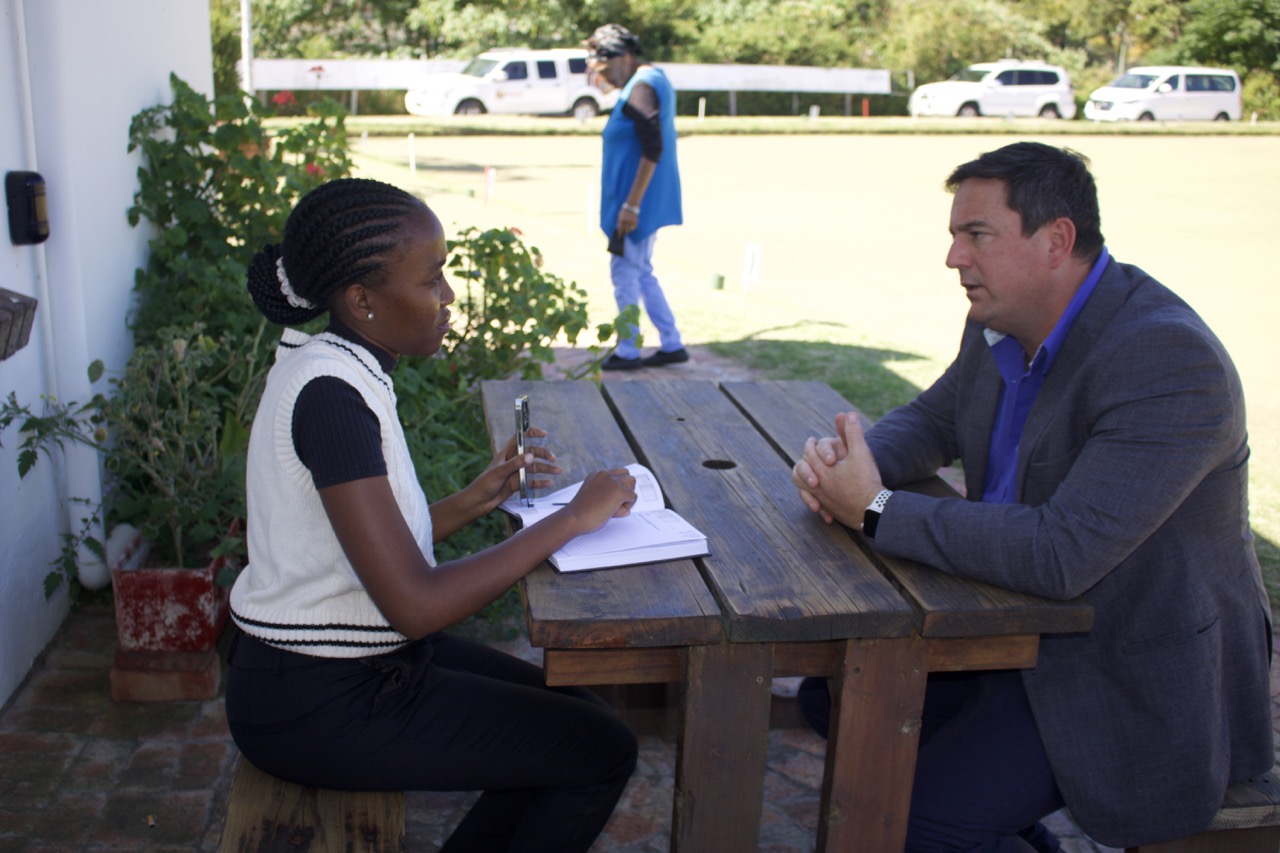By Lerato Kutumela
DA leader John Steenhuisen visited Makhanda recently and sat down for an interview with Grocott’s Mail. The first topic of discussion was the DA’s position on affirmative action.
“Any policy has to be assessed, not on its noble objectives, but on its outcomes. I don’t think that the ANC meant to do harm or had an ulterior motive, I think they recognised that we have to address the imbalances of the past and that you can’t have a fair society where half the people start at the start line and the other half start halfway through,” said Steenhuisen.
Steenhuisen said affirmative action had not been broad-based, evidenced by the fact that over 30 million people still lived below the poverty line in South Africa and it had only benefitted a very small group of people.
“There has been an elite transfer of assets across. Black unemployment has risen, Black households are 10% poorer now. So clearly the policies are not achieving the desired results. The worst thing you can do is to stick to a policy that is not working,” Steenhuisen added.
He said the DA’s economic justice policy believed that policies should be focused on those who fell below the poverty line and who he said genuinely needed empowerment.
“Because of the abhorrent policies of the apartheid government, 99.7% of people who fall below the poverty line are Black. So you don’t need to create artificial proxies for disadvantage. We have a disadvantage issue in the country”, he added.
Steenhuisen said the education system was still deeply unequal, and there had been far too little focus on ensuring that every child had equal access to quality education, healthcare and access to university.
Steenhuisen said the DA was the most pro-poor political party in the country. “The biggest beneficiaries of clean, accountable government are poor South Africans. There is a myth that the DA is a white party only,” he said, explaining that the DA’s voters were one-third white, one-third Black and one-third so-called Coloured.
“We have made significant strides in trying to represent South Africa’s diversity. We have still got a lot of work to do. Have we made progress? Yes. Are we there yet? I wouldn’t say so”, said Steenhuisen, adding that his team represented all races. He questioned why diversity was not demanded of the ANC and EFF, saying “it is almost like the DA must bear the only burden for diversity in the country”.
Also speaking to Grocott’s Mail at the same event, Makana DA proportional representation (PR) councillor Luvuyo Sizani said the DA was no longer a white party. “From my own experience within the DA, I have seen a shift in terms of colour. The DA is one of the diverse parties and one of our principles is to give opportunities to each and every human being. We don’t look at colour, we look at the ability of a person. If you have the ability to do something, an opportunity will be made available to you as a person, not based on your colour”, he said.
Sizani said the recent DA national leadership congress in Graaf-Reinet was very diverse. “I have been in the DA for almost eight years. I have not had any racial issues in the DA”, he said.
Speaking about why a mainly-white audience turned out in Makhanda to hear DA leader John Steenhuisen speak, and why Black people had sat outside the meeting, Sizani said he had brought his constituents but by the time they arrived, the hall was already full.
“Yes, of course when you go to certain meetings, you will see …why are there only white people? I think the timing is very crucial because in this case, the meeting started at 11am so most of the people are at work, they are not here, so you see elderly people coming because those are loyal members”, he added
Speaking about the poor state of service delivery in Makana, Sizani said a large chunk of the Makana municipality budget was spent on salaries and there was not enough left over for service delivery. He said to fix all the roads in Makhanda would cost R2 billion, and neither the municipality nor the Department of Transport would have enough funds for that.


